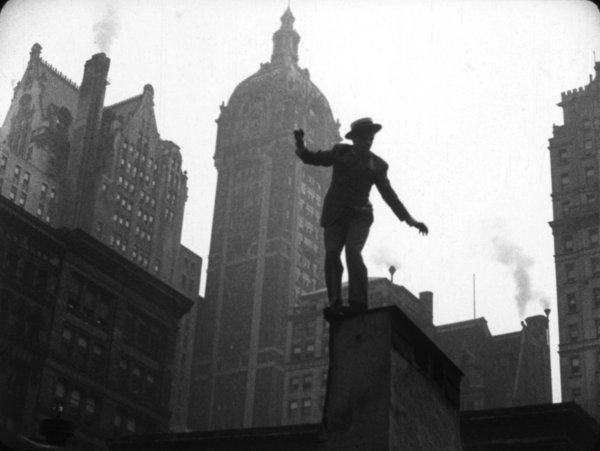
One of the highlights of last fall’s silent film festival in Pordenone, Italy was the premier of Orson Welles’s ‘lost’ 1938 film, ‘Too Much Johnson.’ A lost silent film made by Orson Welles shot three years before Citizen Kane? As usual, when talking about the life and career of Orson Welles, some explanation is in order.
In 1938, Welles, along with his Mercury Theater co-founder John Houseman, decided to stage a play on Broadway with the lewd but memorable title, Too Much Johnson. The season before Welles and Houseman had staged a successful adaptation of the French play The Italian Straw Hat. Their newly renamed version of the play, Horse Eats Hat, was perhaps a cue to the audience to expect less wordplay and more horseplay than in the original production, and they must have seen a similar possibility to amend and change the serviceable, but dated farce, Too Much Johnson. which had been first produced in 1894, and written by William Gillette, a playwright and actor, better known to us for his stage portrayal of Sherlock Holmes.
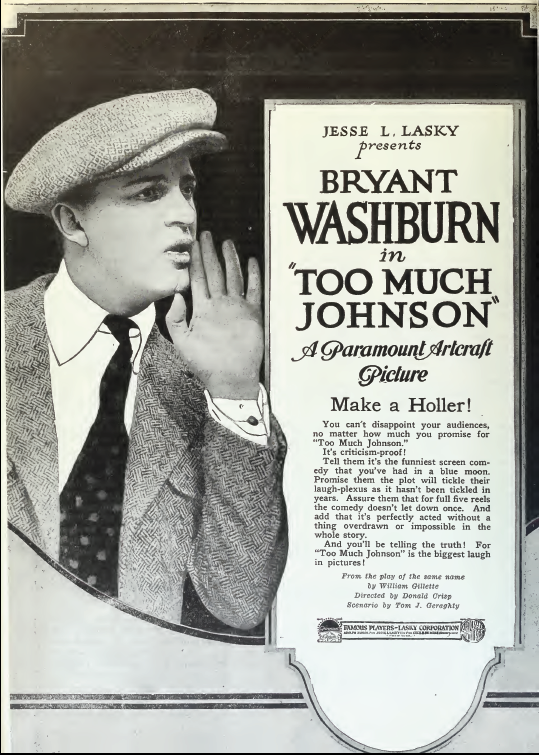 The first act of the play in its original form starts on a ship bound for Cuba, where we learn that Augustus Billings, a New York lawyer, is romancing another man’s wife by pretending he is a Cuban plantation owner. Meanwhile, there is another pair of lovers, Leonora and Henry, who must contend with an overbearing father, Faddish, who wants his daughter Leonora, to marry a plantation owner who really does have the name Johnson. As the ship sets sail for Santiago, the confusion of mistaken identities intensifies as they chase each other around the boat. In the second and third act, they reach Cuba, where after a series of misadventures, Billings, along with Leonora and Henry, escape the island, leaving Faddish and Johnson behind to plot revenge.
The first act of the play in its original form starts on a ship bound for Cuba, where we learn that Augustus Billings, a New York lawyer, is romancing another man’s wife by pretending he is a Cuban plantation owner. Meanwhile, there is another pair of lovers, Leonora and Henry, who must contend with an overbearing father, Faddish, who wants his daughter Leonora, to marry a plantation owner who really does have the name Johnson. As the ship sets sail for Santiago, the confusion of mistaken identities intensifies as they chase each other around the boat. In the second and third act, they reach Cuba, where after a series of misadventures, Billings, along with Leonora and Henry, escape the island, leaving Faddish and Johnson behind to plot revenge.
Welles liked this play well enough to consider staging in on Broadway, but with his ever- present itch to try something new, he came up with what was then a very original idea. He wanted to have a short film precede each act of the play that would function as part of the performance—the actors would be seen on the screen, and then, after the film was over, the same actors would walk unto to the stage to continue the drama—the film sequences and the live drama would function together with a unity of purpose for purpose of telling a story. The idea of linking film and theater into a combined narrative wasn’t completely new. In 1908 L. Frank Baum brought his Wizard of Oz characters to life using a combination of live actors, magic lantern slides and film in his stage production The Fairylogue and Radio-Plays, and there had been other previous productions in Europe with a similar ideas. But Welles planned to carry the concept much farther, completely integrating the elements of live theater, film and musical accompaniment into one seamless entity.
With this goal in mind, Welles gathered together the group of players scheduled to be in the stage production, and spent ten days filming scenes that would become the prologues for each act. The play was cast with actors from Welles’s repertory group, and included Joseph Cotten and a young Arlene Francis. Welles planned to edit together the footage in time for the play’s premiere, set for August 17 at Stony Creek, a small theater in Connecticut. If the play received good reviews during this ‘tryout,’ the next step would be a move to Broadway, where his idea of combining theater and film would be in full critical view. The cameraman for this project was Harry Dunham, an experienced documentary filmmaker who had filmed the Spanish Civil War and the Japanese invasion of China. Dunham was well suited for this assignment, which included largely improvisational, on-the-fly camera setups.
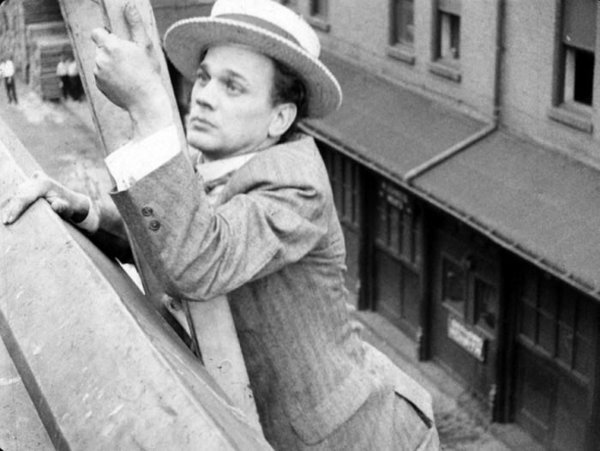
George Eastman House / Cinemazero / La Cineteca del Friuli
Welles and his crew first shot on the streets and roofs of Manhattan, and then went up the Hudson to Tompkins Cove quarry and filmed on locations that would double (with the help of a few rented palm trees) for Cuba, where the last part of the play takes place. After the filming was completed, Welles took the footage, and working in a New York hotel room, spliced together a workprint, including all the takes from each scene. This workprint ran a total of sixty-six minutes, from which about twenty minutes would have been edited together as a prologue for the first act, with shorter prologues used for the next acts. Each of these prologues would then preface the stage portion of the next act.
It was at this time when several factors came into play with would doom the project. The first is that Welles had not secured the film rights to the play, which were owned by Paramount Pictures, who had released a version of the story in 1920. Paramount notified Welles that they would demand a fee if any type of film—no matter how experimental—was used in the production of the play. A second problem was the Stony Creek Theater—where the play was scheduled for its tryout run—didn’t have the ability to project the film properly. Then Welles and Houseman suddenly found themselves in a cash flow problem—they had no more money to pay their actors, or buy film stock. The Mercury Theater had always run more on prestige and goodwill than on box office receipts, and with the costs of this film production quickly adding up, Welles and Houseman found themselves suddenly facing a huge budget deficit.
But perhaps the most pressing problem was that the play was set to premiere August 17. With no time for further editing or reshoots, with no money to pay off a film studio for the rights to an experimental project that might not work anyway, and with a venue that would not allow any simple way to project the film even if the first two conditions were met, the solution was obvious: Welles abandoned the attempt to use the filmed prologues. Shorn of these filmed interludes, or more accurately, never having them, Too Much Johnson premiered as scheduled, August 17.
As what happens to many (if not the majority) of the plays bucking for a chance to play in the very competitive New York theater circuit, Welles and his company decided the reception and critical reviews in the tryout were not strong enough to warrant a Broadway premiere. Too Much Johnson ended its short run at the Stony Creek, and the actors and staff moved on to other projects. John Houseman, in his autobiography, Run-Through, describes that Welles, angry and despondent at having to give up on his plans for the play, retreated to his hotel room and spent the week in bed. Years later, Houseman concluded the experience was Welles’s first real setback, his first significant ‘defeat’ in trying to mount an ambitious production. If so, it would set a precedent that would be repeated at a much larger scale in the years that followed.
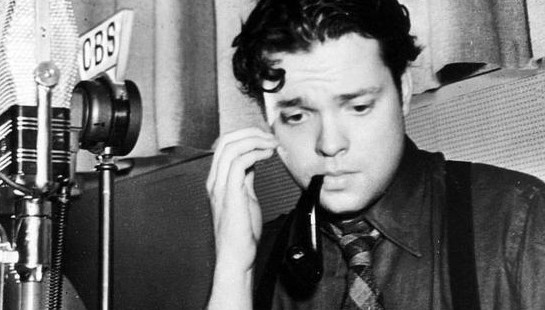 But for now, the ever-present demand from his numerous radio programs soon returned him to his workaholic habits. Two months later, on Halloween night, October 31, Orson Welles achieved international fame with his radio broadcast of H.G. Wells’ War of the Worlds, by staging the drama as if it was really happening and being covered by the news services. Riding on a surge of fame and celebrity in a few short years he had moved to Hollywood, and in 1941, made Citizen Kane, now regarded as one of greatest films ever made. However, the release of Citizen Kane angered the 1940’s version of The Powers That Be, and afterward Welles’s career began a slow, sputtering descent, eventually forcing him to scramble for work, and giving him perpetual funding problems for his projects.
But for now, the ever-present demand from his numerous radio programs soon returned him to his workaholic habits. Two months later, on Halloween night, October 31, Orson Welles achieved international fame with his radio broadcast of H.G. Wells’ War of the Worlds, by staging the drama as if it was really happening and being covered by the news services. Riding on a surge of fame and celebrity in a few short years he had moved to Hollywood, and in 1941, made Citizen Kane, now regarded as one of greatest films ever made. However, the release of Citizen Kane angered the 1940’s version of The Powers That Be, and afterward Welles’s career began a slow, sputtering descent, eventually forcing him to scramble for work, and giving him perpetual funding problems for his projects.
Decades later, as part of a revival of interest in his work, an effort was made to recover the workprint of Too Much Johnson, which had been put in a figurative (or perhaps literal) closet in 1938 and long forgotten. But no one could find any trace of the film. The best guess, made by Welles himself, was that the reels of nitrate film had burned in a fire in his house in Spain in the 1970s. Too Much Johnson was consigned to an ever-growing number of ‘what if’ projects by Welles that for various reasons, were never completed, a list that if compiled, would rival the collection of items seen at the end of Citizen Kane.
Decades after Welles’s death, by complete coincidence, Welles’s Too Much Johnson—a films designed by Welles to use the techniques of silent film to tell a story—turned up in a warehouse in Pordenone, Italy, a town where people come from around the world each year to attend a festival dedicated to silent film. Once it was determined that the film was indeed Welles’s ‘lost film,’ the reels were sent for restoration, and at the most recent festival, for the first time ever, the public was able to see this uncompleted project of Orson Welles.
As part of the film’s premiere, Paolo Cherchi Usai narrated the various sequences, along with piano accompaniment by Philip Carli. Before the film started, it was explained that we were watching a workprint, and were cautioned on having high expectations; after all we would clearly be watching a work in progress, with no intent for it to be a finished product. Helped both by Cherchi Usai’s knowledgeable narration and Carli’s expert ability to give us a music that matched the tone and context of what we were seeing, watching the film turned out to be a real delight. The experience was far more interesting than I had expected, and left me to ponder many ideas as I left the theater.
My first thought was that for film enthusiasts, watching a workprint, even one made as casually as this was, is a very rewarding experience. If you are interested seeing what such a print looks like, I recommend Criterion’s DVD of Night of the Hunter which includes a wonderful bonus track: Charles Laughton Directs “The Night of the Hunter,” a fascinating compilation of outtakes and behind-the-scenes footage.
Here is the link that discusses these outtakes and extra footage in more detail:
http://www.criterion.com/films/27525-the-night-of-the-hunter
My second thought about watching the workprint of Too Much Johnson is how this footage demonstrates the importance and advantage of using professional actors. Award winning director Alexander Payne, a huge fan of traditional Hollywood filmmaking, has said during interviews that 80% of directing a film is casting the right actors for the parts. I completely agree with Payne’s observation and in this footage you can see what Payne is talking about, as we watch Joseph Cotten, Arlene Francis and the rest of the actors, run through their paces (even John Houseman shows up for a cameo). These men and women are have years of experience and training—they know how to use their hands and arms, they know how to hold an expression and how to move their body—this discipline is on display even in the most cursory of shots.
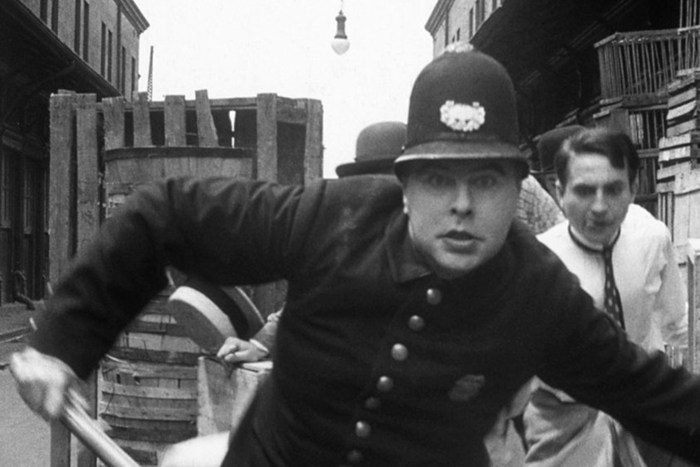
John Houseman, many years before becoming a Harvard law professor, was once a Keystone Cop
George Eastman House / Cinemazero / La Cineteca del Friuli
I’ve read speculations that what we saw was not a workprint, but rather the ‘outtakes’ from a more carefully edited print. In other words, a more pristine (read: masterful) print exists—or at one time existed—where one can see a more finished version of the film. This line of reasoning posits that this version of Too Much Johnson was perhaps the print Welles was thinking of when he talked about losing as a consequence of the fire at his house in Spain. The idea that a more ‘finished’ film by Welles is still ‘out there,’ is tantalizing—almost too tantalizing. It smacks of a need to frame the scenario into a pulp fiction quest, a version of Dashiell Hammett’s Maltese Falcon reconstituted into cans of nitrate film perhaps still lurking in a dark, forgotten corner.
However fanciful, I would not dismiss this idea out of hand. Instead, the theory could be tested by comparing the raw nitrate film, and carefully analyzing the progression of outtakes in the sequences, while also looking for splices and other signs of alteration. No mention of this was discussed during the festival, and as to further discussion of this possibility, I quote Carl Sagan: “Extraordinary claims require extraordinary evidence.”
Other reviewers of Too Much Johnson wax enthusiastic about the photography, lighting and composition of the images, comparing them favorably to Citizen Kane, still four years away. While it’s certainly possible Welles was already thinking ahead about the use of dramatic angles and deep space, let’s remind ourselves that he was working with Harry Dunham, an experienced cameraman, who surely knew how to frame a shot. What I see in most of this footage is a professional use of location and natural light in order to show the actors to the best advantage, even in the most improvisational camera setup. My conclusion: While it’s clear that Welles was involved in at least some aspects of the photography of this production, let us give credit to Dunham for doing his best in what must have been very trying conditions.
One of the joys of watching this film is simply the ability to see the New York skyline of 1938. When watching a finished film shot on location, this is always a side benefit, but most films are edited so tightly that the pleasure of taking your eye off the actors and just taking in a physical space is difficult. Not so with a workprint like this, with its multiple takes. Under this format, the viewer has the freedom to enjoy the scenery without a compelling need to pay attention to any narrative. This allows you to see what New York buildings been lost to time, or to try to identify what landmarks are still present.
A persistent problem I have with the all the discussion of Welles being a famous filmmaker (a discussion revisited by the discovery of this film) is that I think his major contributions are not in film but rather in theater and radio drama. The lack of attention to his stage work is natural enough, since by its nature theater is an ephemeral art, and each audience will have the pleasure of watching a dramatic performance in a way that can’t be repeated. I think the real ‘lost,’ or to be more accurate, ‘forgotten’ works of Orson Welles are his radio dramas.
We have an extensive archival collection of Orson Welles’s radio performances, from his role as The Shadow, to his pioneering work on radio literary adaptations, to even exotica like the radio series he played as Harry Lime (presumably the episodes take place before the events of The Third Man). But the popular interest for his work in this field is minimal, which is part of a larger cultural disinterest in the pursuit of radio as a medium for telling stories. Most of the radio programs from the 1930s have fallen into public domain and appreciation in the United States for this form of dramatic presentation languishes for all but the most devoted niche market.
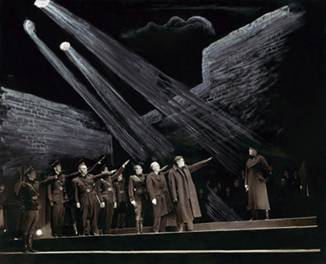 In the context of the ten days he spent shooting Too Much Johnson, let’s look at what else was on Welles’s plate for the spring and summer of 1938. The Mercury Theatre itself was finishing a run of the critically acclaimed adaptation of The Tragedy of Julius Caesar that evoked comparison to contemporary Fascist Italy and Nazi Germany. It premiered on Broadway on November 11, 1937 and this production extended into 1938. On March 14, 1938, the Broadway production moved from the Mercury Theatre to the National Theatre. The Mercury Theatre’s second production was a staging of Thomas Dekker’s Elizabethan comedy The Shoemaker’s Holiday, which attracted “unanimous raves.” It premiered on January 1, 1938, and ran to 64 performances in repertory with Caesar, until April 1. The third Mercury Theatre play was an adaptation of George Bernard Shaw’s Heartbreak House, which again attracted strong reviews. It premiered on April 29, 1938, and ran for six weeks, closing on June 11. It was the last Mercury Theatre production before the troupe began broadcasting on the radio as well. Orson Welles (with John Houseman) was the co-founder of the Mercury Theater, and although he certainly didn’t have day-to-day management duties, he at least had nominal supervision of all these projects.
In the context of the ten days he spent shooting Too Much Johnson, let’s look at what else was on Welles’s plate for the spring and summer of 1938. The Mercury Theatre itself was finishing a run of the critically acclaimed adaptation of The Tragedy of Julius Caesar that evoked comparison to contemporary Fascist Italy and Nazi Germany. It premiered on Broadway on November 11, 1937 and this production extended into 1938. On March 14, 1938, the Broadway production moved from the Mercury Theatre to the National Theatre. The Mercury Theatre’s second production was a staging of Thomas Dekker’s Elizabethan comedy The Shoemaker’s Holiday, which attracted “unanimous raves.” It premiered on January 1, 1938, and ran to 64 performances in repertory with Caesar, until April 1. The third Mercury Theatre play was an adaptation of George Bernard Shaw’s Heartbreak House, which again attracted strong reviews. It premiered on April 29, 1938, and ran for six weeks, closing on June 11. It was the last Mercury Theatre production before the troupe began broadcasting on the radio as well. Orson Welles (with John Houseman) was the co-founder of the Mercury Theater, and although he certainly didn’t have day-to-day management duties, he at least had nominal supervision of all these projects.
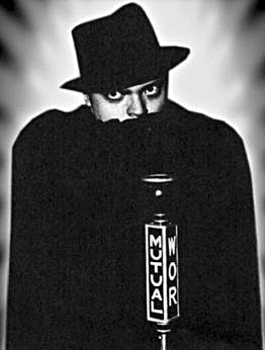 In addition to these numerous and complex theater productions, Welles was so in demand as a radio actor that he had to be taken from one studio to another by ambulance to get to the recordings in time. An partial list of these roles in the summer of 1938 include a weekly performance as The Shadow and a lead role in a CBS show titled First Person Singular, a series of radio dramas adapted famous literary novels. Soon to be renamed The Mercury Theater on the Air, Welles and his associates would rehearse the script, make editing changes, and perform the show—all in less than seven days. Sometimes the script would be written in hours, not days or weeks. John Houseman, in his autobiographies Run-Through and Unfinished Business, talks about Welles’s sudden decision to use Bram Stoker’s Dracula for next week’s show. To meet this impossible deadline, Welles and Houseman spent all night at Perkin’s restaurant in Manhattan tearing the pages out the Stoker’s novel so that they could condense and rewrite the story to get it down to a one-hour format. And seven days later they had to be ready for Treasure Island. The year of 1938 must have been a blur on the calendar for both Welles and his staff.
In addition to these numerous and complex theater productions, Welles was so in demand as a radio actor that he had to be taken from one studio to another by ambulance to get to the recordings in time. An partial list of these roles in the summer of 1938 include a weekly performance as The Shadow and a lead role in a CBS show titled First Person Singular, a series of radio dramas adapted famous literary novels. Soon to be renamed The Mercury Theater on the Air, Welles and his associates would rehearse the script, make editing changes, and perform the show—all in less than seven days. Sometimes the script would be written in hours, not days or weeks. John Houseman, in his autobiographies Run-Through and Unfinished Business, talks about Welles’s sudden decision to use Bram Stoker’s Dracula for next week’s show. To meet this impossible deadline, Welles and Houseman spent all night at Perkin’s restaurant in Manhattan tearing the pages out the Stoker’s novel so that they could condense and rewrite the story to get it down to a one-hour format. And seven days later they had to be ready for Treasure Island. The year of 1938 must have been a blur on the calendar for both Welles and his staff.
Here is only a partial list of the novels adapted in the summer and fall of 1938 for his radio drama series:
July 11 Dracula by Bram Stoker
(It was after this radio performance that Houseman says they started shooting Too Much Johnson)
July 18 Treasure Island by Robert Louis Stevenson
July 25 A Tale of Two Cities by Charles Dickens
August 1 The Thirty Nine Steps by John Buchan
August 29 The Count of Monte Cristo by Alexandre Dumas
October 2 Oliver Twist by Charles Dickens
October 16 Seventeen by Booth Tarkington
October 30 The War of the Worlds by H. G. Wells
November 6 Heart of Darkness by Joseph Conrad
(This list is from Jonathan Rosenbaum, “Welles’s Career: A Chronology”, in Jonathan Rosenbaum (ed.), Orson Welles and Peter Bogdanovich, This is Orson Welles. New York: Da Capo Press, 1992)
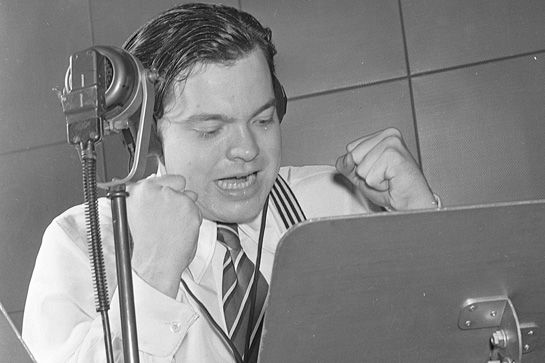 The number and variety of productions Welles was involved with in this period is breathtaking. Of course not every project he worked on was meant to be deathless prose, or even memorable. Much of what he did was simply use his wonderful, sonorous voice to give life to a script thrust in front if him, as he ran, breathless, from one gig to another. Todd Tarbox’s book, Orson Welles and Roger Hill: A Friendship in Three Acts includes an interview Welles gave many years later, describing this moment in his life: “I was making a couple of thousand a week, scampering in ambulances from studio to studio, and committing much of what I made to support the Mercury. I wouldn’t want to return to those frenetic 20-hour working day years, but I miss them because they are so irredeemably gone.”
The number and variety of productions Welles was involved with in this period is breathtaking. Of course not every project he worked on was meant to be deathless prose, or even memorable. Much of what he did was simply use his wonderful, sonorous voice to give life to a script thrust in front if him, as he ran, breathless, from one gig to another. Todd Tarbox’s book, Orson Welles and Roger Hill: A Friendship in Three Acts includes an interview Welles gave many years later, describing this moment in his life: “I was making a couple of thousand a week, scampering in ambulances from studio to studio, and committing much of what I made to support the Mercury. I wouldn’t want to return to those frenetic 20-hour working day years, but I miss them because they are so irredeemably gone.”
When placed in the context of all the other work Welles was doing in 1938, the ten days of shooting a silent film on the streets of New York must have felt like a summer vacation. And more importantly, it was an easy project to put aside as other more important projects loomed in the horizon.
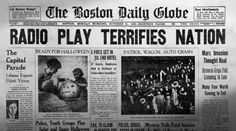 Looking at the impressive list of these radio dramas, of particular interest are the last two productions: If anyone remembers Welles’s radio work at all, it is because of his version of War of the Worlds, probably the most famous radio show ever done. And then in just the next week, the Mercury Theater group performed a story that Welles thought highly of, The Heart of Darkness. This was the first film project he attempted when given his contract at RKO and elements of the story found their way into Citizen Kane. Indeed, one could argue that our effort to peer into a heart of man who does not even understand himself is essentially an urbanized version of The Heart of Darkness.
Looking at the impressive list of these radio dramas, of particular interest are the last two productions: If anyone remembers Welles’s radio work at all, it is because of his version of War of the Worlds, probably the most famous radio show ever done. And then in just the next week, the Mercury Theater group performed a story that Welles thought highly of, The Heart of Darkness. This was the first film project he attempted when given his contract at RKO and elements of the story found their way into Citizen Kane. Indeed, one could argue that our effort to peer into a heart of man who does not even understand himself is essentially an urbanized version of The Heart of Darkness.
Since Welles essentially did Dracula and Too Much Johnson as back-to-back efforts—one immediately after the other—it’s interesting to compare the two projects. The radio drama Dracula had a turnaround time, from start, to airing on national radio, of about two weeks, perhaps only a week or so, if one counts the actual days involved. Despite this amazingly short pre-production time, Welles’s Dracula is nowadays considered one of the best of all the adaptations of the novel, closer in intent and spirit to the novel than (arguably) any of the hundred of versions, in any media, done before or after. By contrast, the budget and time Welles gave himself to shoot, edit and complete about forty minutes of filmed material was completely inadequate for the task. The contrast is striking: Welles and his talented coworkers took about ten days to create the radio drama Dracula, a work of art still valued today, but after more than fifty days (and exhausting their funds) had to give up on the uncompleted Too Much Johnson. Welles would realize from this misadventure that working in film required time, money and energy in a scale magnitudes higher than working in the media of radio, which inherently has fewer factors one must control and account for.
Here is Orson Welles talking about the novel Dracula:
The radio drama Dracula can be found in various locations on the Internet; here is one link to it via Youtube:
If on shaky ground from the start, Welles’s effort to complete Too Much Johnson was probably doomed the moment he decided to edit the film himself, rather than to give the job to an experienced hand. On the other hand, the decision probably paid off huge dividends in the long run, since his weeks of running through the reels of film gave him an invaluable apprenticeship for what would eventually be a far more important project, Citizen Kane.
Some final thoughts: In the program notes, and in the subsequent reviews written about this film, the idea has been put out that Welles intended to have three prologues, one to start each act. However, Houseman in his memoirs writes that Welles planned two filmed prologues, not three. In reading the theater script and watching the workprint, I think Welles planned to condense act two and three into just one act, and have only a prologue before each act. Since part of the workprint includes a duel (alluded to but not shown in the original play), the possibility exists of having a third filmed interlude near the end of Welles’s adapted version. So this technically gives us two prologues, not three, and then perhaps the possibility of a filmed sequence right before the climax of the farce. This intent could perhaps be verified by examining an actual script used at the Stony Creek Theater performance (assuming this script survives) and this would help us better understand how Welles planned to integrate his filmed interludes into the play.
During the film’s premiere in Pordenone, and in subsequent discussions about the film, the theory was put out that Welles designed these prologues as ways of simplifying and condensing the expositional elements of the play so each act could ‘hit the ground’ running and plunge quickly into the story. After reading the original theater script of Too Much Johnson I am convinced this idea is wrong, or at least misleading. If anything, the prologues add complexity to the story, by showing us the events that happened just before the ship sails off to Cuba. In the theater script, much of the backstory is given to us in a quick (if dramaturgically awkward) fashion by Billings, who explains to a befuddled purser why all the involved parties are on board. In a few short passages, we have all we need to know about all the characters.
I think Welles had a simple and much better reason to do this—a filmed prologue was going to be the twist, the ‘new’ thing that made his play different from anyone else’s. He had been the first to put ‘voodoo’ in Macbeth; he had been the first to stage Julius Caesar in the setting of a contemporary fascist state. So the challenge for him was to figure out what could he do with Too Much Johnson, something so interesting that everyone had to see it. In reading the script of the play, a thought may have come to him (it did to me) that there were elements of the play that functioned better in the style of silent film slapstick comedy than as theatrical farce. At some point while mulling over this script, the idea must have struck him —why not include silent slapstick comedies, and dramatically integrate them into the production? Nobody had done that before. Another first, another Orson Welles original.
And he was completely right to think this. Orson Welles’s talents were in the direction of adaptation, rather than in writing or developing his own material. I say this not as a criticism, but rather as an explanation of one of Welles’s greatest gifts—the ability to see how to find an angle that would take something old and make it new. When he was forced to abandon the idea to include these films as part of performing Too Much Johnson, Welles knew more than anyone that the play would revert back to being a creaky, outdated, turn-of-the-century farce. After the short run at Stony Creek, which Houseman described as ‘trivial, tedious and underrehearsed,’ any thought of transferring the production to Broadway was abandoned, and after the last performance, the play was quickly forgotten, becoming merely a odd footnote to Orson Welles’s career.
In regard to plays performed with filmed interludes—I have seen two plays with film incorporated into live theater, the musical Hollywood Boulevard, and a drama, Hitchcock Blonde. In my opinion, neither attempt at mixing stage with filmed images worked for the simple reason that the moving image was always more compelling to the eye than the static stage. Just when you hoped you could sit back and enjoy the movie, the lights went on and the actors started their business. But to be fair, I can’t compare these modern attempts to blend film and theater to what Welles did—his prologues were different and more complex, not only because the actors on the screen were the same actors who were doing the stage performance. Welles was trying for a truly integrated attempt to integrate the scenes into the play, which leads to my final thought:
 After watching these sixty-six minutes of film, I can’t think of a greater honor to Welles than for someone to take the material here and fashion something new out it. Welles spent his entire career updating versions of other people’s work (Shakespeare being the most obvious), so ‘re-purposing’ this material would be a very Wellesian proposition. There would be two obvious directions for this—one would be to cut together these dailies and fashion the prologues as he had planned so that the play itself could be performed as he originally intended. The other idea would be to take the footage and create a new piece of silent film with no need to connect itself with the Gillette play; with the right editing and judicious use of intertitles, an ambitious editor could put together a completely new story. It’s been done before in the silent film world, using stars such as Chaplin—this new story could be a slapstick silent film done under the style of Mack Sennett, starring the able and forever young cast of the Mercury Theater. And while watching for this updated version of Too Much Johnson, we can always hope for other plays, films and radio dramas by artists who are inspired by what Welles was able to achieve. Inspired by, but not a slave to his work, because above all there is always the dictum that Welles gave to himself: Always find a way to make what you are doing different, unique, and your own.
After watching these sixty-six minutes of film, I can’t think of a greater honor to Welles than for someone to take the material here and fashion something new out it. Welles spent his entire career updating versions of other people’s work (Shakespeare being the most obvious), so ‘re-purposing’ this material would be a very Wellesian proposition. There would be two obvious directions for this—one would be to cut together these dailies and fashion the prologues as he had planned so that the play itself could be performed as he originally intended. The other idea would be to take the footage and create a new piece of silent film with no need to connect itself with the Gillette play; with the right editing and judicious use of intertitles, an ambitious editor could put together a completely new story. It’s been done before in the silent film world, using stars such as Chaplin—this new story could be a slapstick silent film done under the style of Mack Sennett, starring the able and forever young cast of the Mercury Theater. And while watching for this updated version of Too Much Johnson, we can always hope for other plays, films and radio dramas by artists who are inspired by what Welles was able to achieve. Inspired by, but not a slave to his work, because above all there is always the dictum that Welles gave to himself: Always find a way to make what you are doing different, unique, and your own.




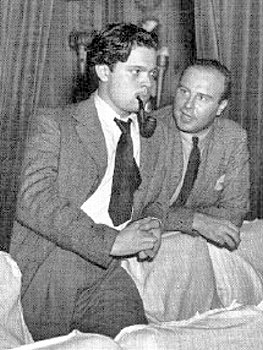
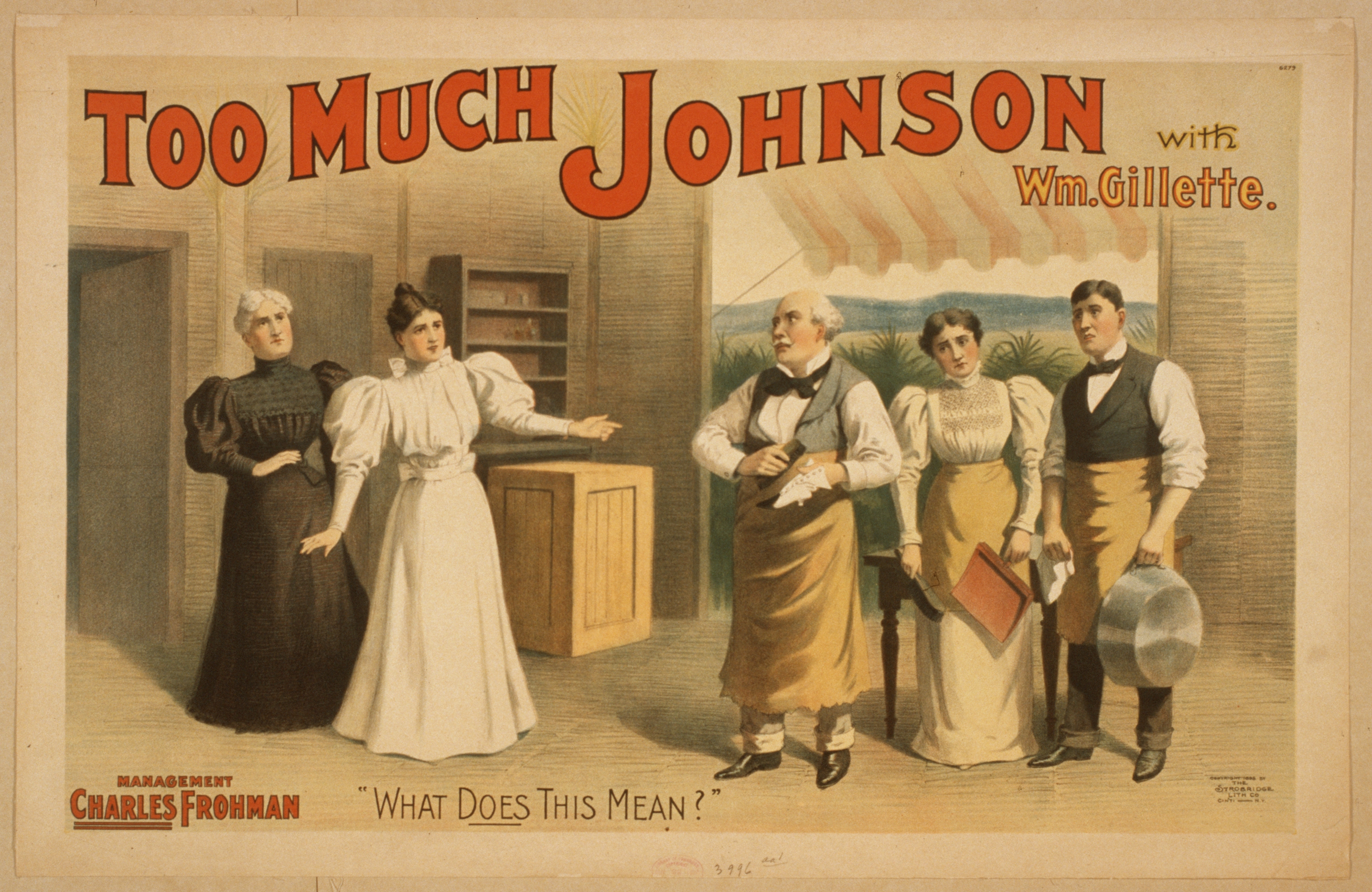
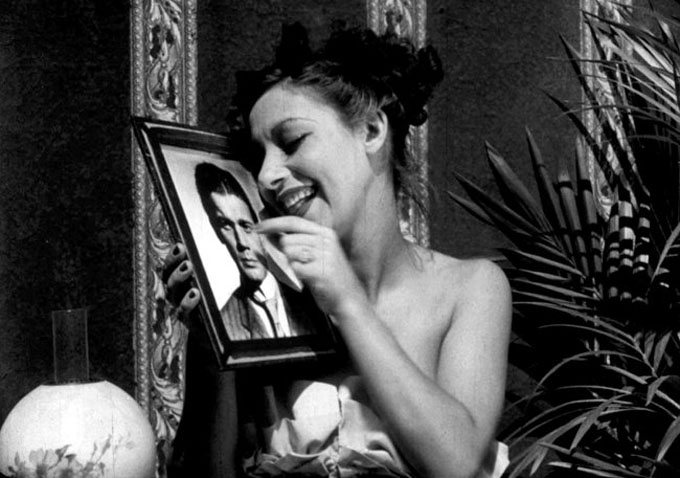
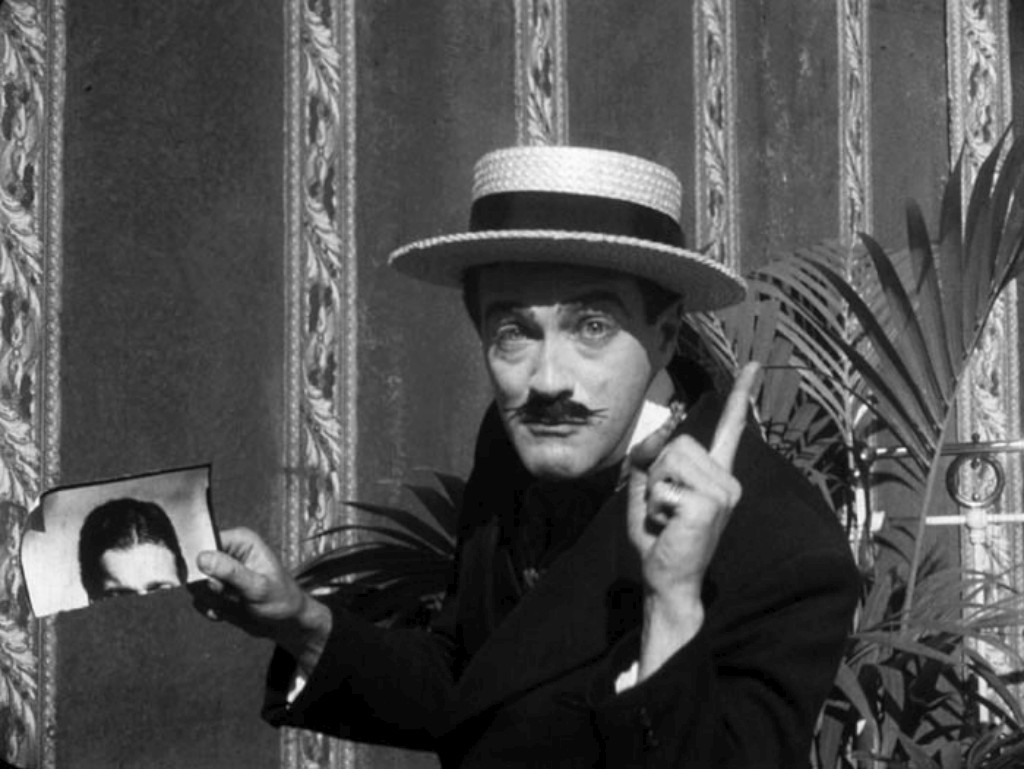
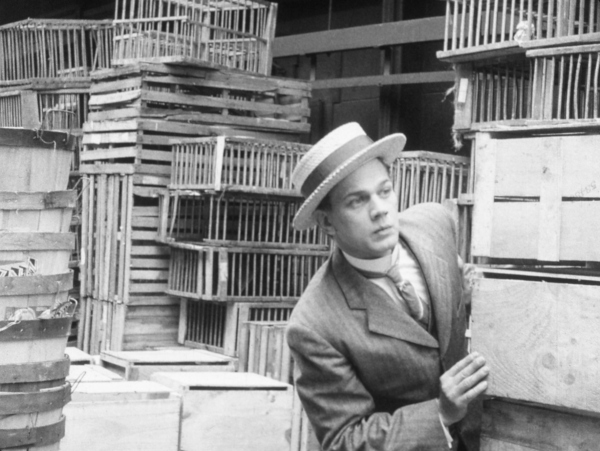
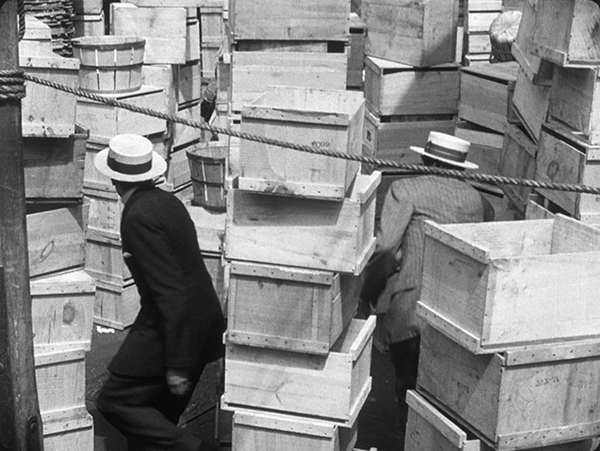
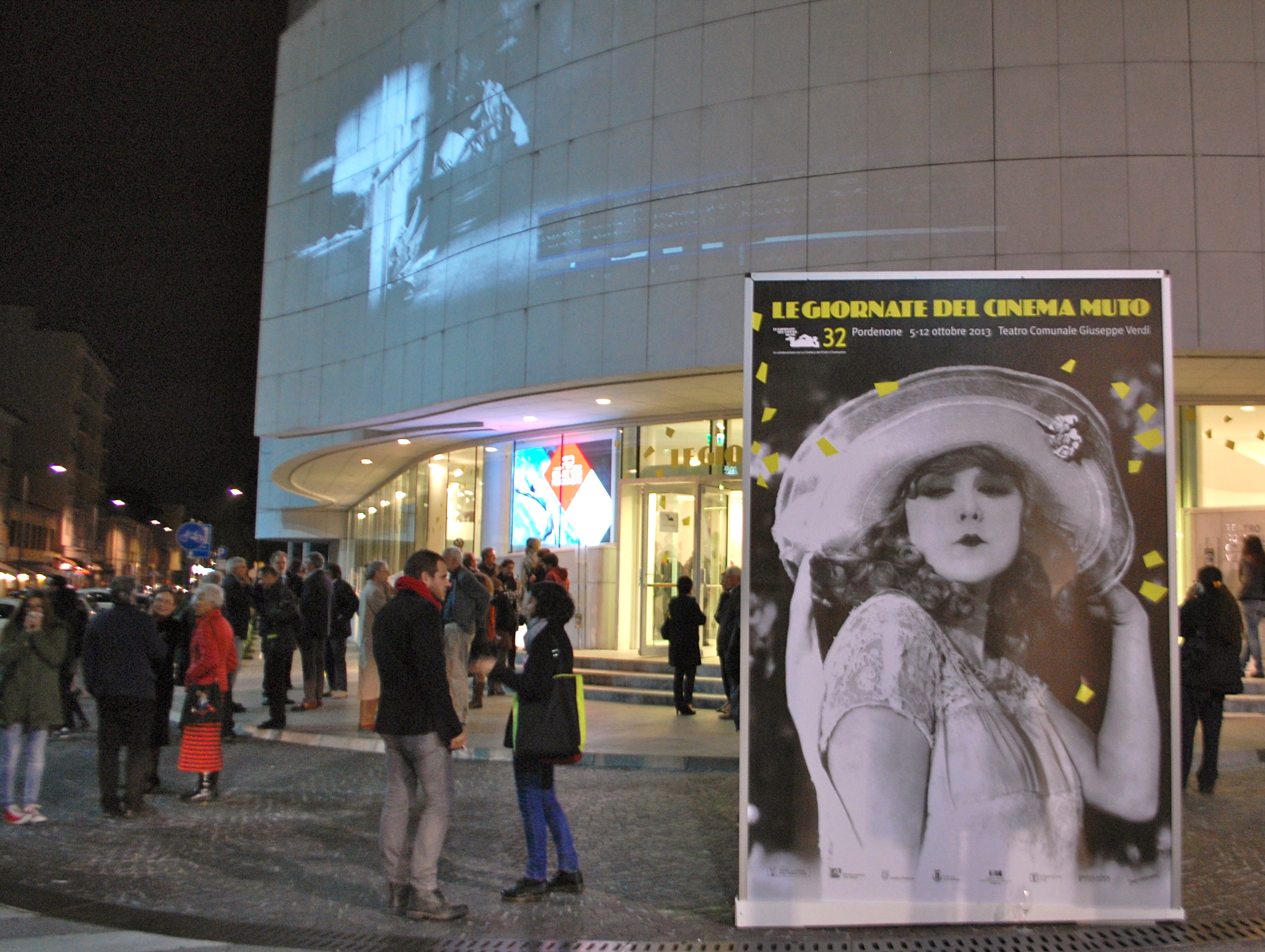
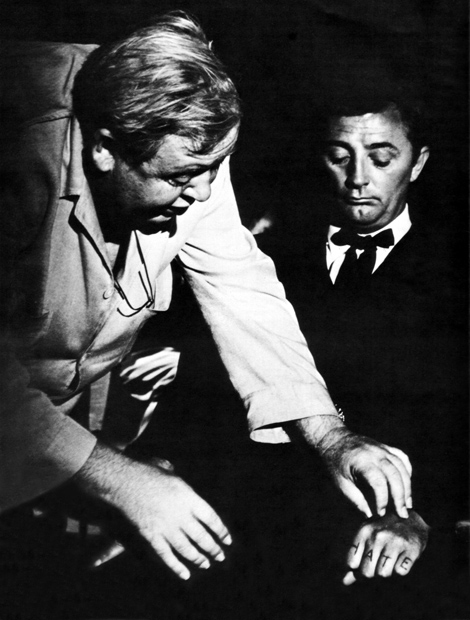
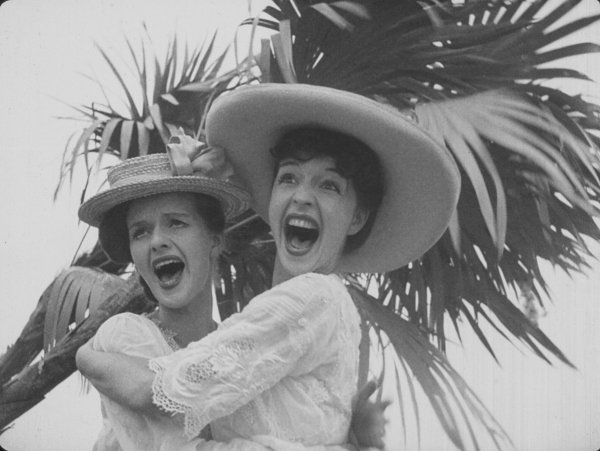
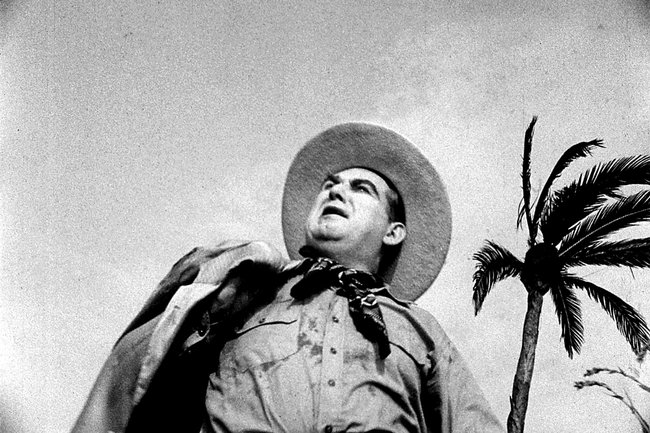

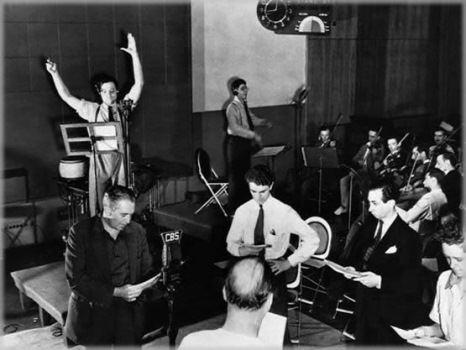
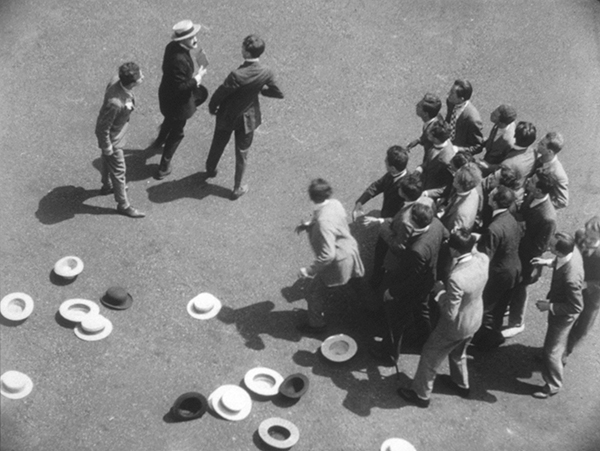
One thought on “Too Much Johnson Is Never Enough Orson: The ‘Lost Film’ of Orson Welles”
You share interesting things here. I think that your page can go viral
easily, but you must give it initial boost and i know
how to do it, just type in google for – mundillo traffic increase
go viral